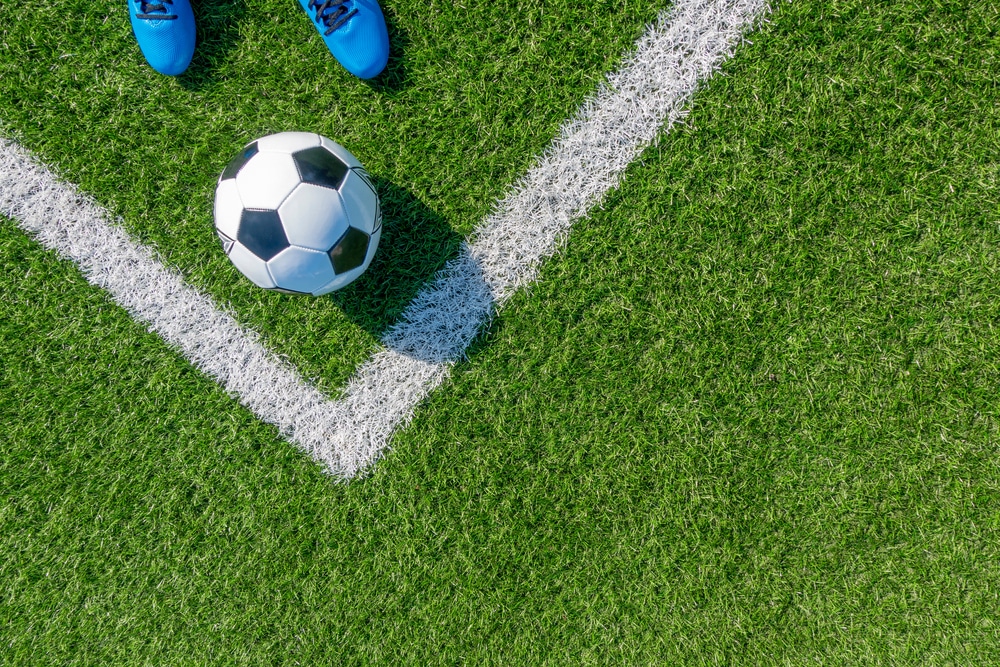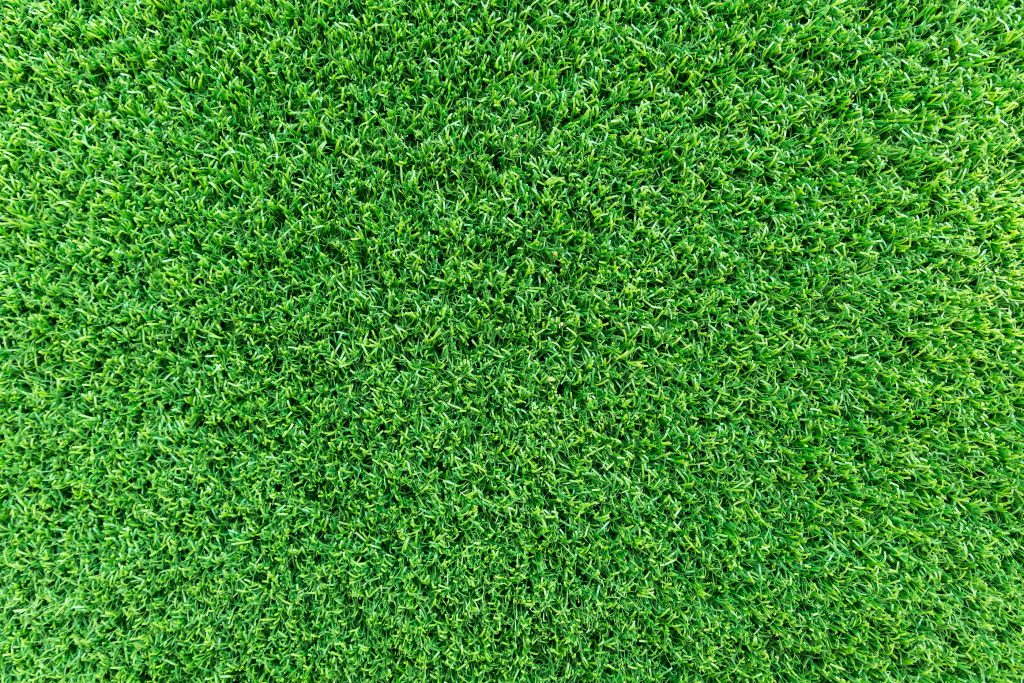Artificial Turf vs Grass for Football Fields


When getting a football field up and running – whether for a school, the community, or the NFL – there are several important decisions to make. One of them is whether to have fake grass or real grass installed.
In the past, people strayed away from artificial turf because it looked and felt fake. That’s not the case anymore. Not only that, but artificial grass has some real benefits over natural grass when installed on a football field. Here is a comparison between artificial turf and real grass for football fields:
1. Foot Traffic Resistance of Synthetic Turf vs Natural Grass
Natural grass can withstand trampling feet for a few hundred hours per year. After heavy play (i.e., multiple games per week), the grass will need to rest. Otherwise, it will look worn and damaged. Dead patches will even begin to form.
That’s not the case with artificial turf. Turf can withstand heavy foot traffic on the playing field for an impressive 3,000 hours of play each year. There is no lengthy resting period required either.
While natural grass looks nice, it can only withstand so much foot traffic before being pummeled into dirt. A residential lawn, for example, may benefit from natural grass without excessive traffic, children playing, or pets roaming. But a football field? That’s another matter altogether.
2. Maintenance Requirements of Fake Grass vs Natural Grass
No matter the lawn, natural or artificial, maintenance is a requirement. The thing about synthetic turf, however, is that maintenance is simple and to the point. You must remove debris, brush the surface, and top off infill levels occasionally. That’s all!
With natural grass, you’re looking at significantly more maintenance and higher costs. The need for mowing, watering, fertilizing, pesticides, and aeration means plenty of downtime. With a sports stadium, all of that maintenance means hiring a crew, purchasing equipment, and spending money from the budget on watering, fertilizer, and pesticide products. It gets expensive fast.
Speaking of expensive, let’s look at the cost of specific maintenance tasks for natural grass.
- Fertilizer — $6,000
- Fungicides — $1,500
- Herbicides — $2,000
- Topdressing — $3,500
- Paint — $4,000
These numbers are on the low end, but that’s a total of $17,000 per year. But that’s not all. Many sports stadiums hire full-time and seasonal staff to care for the grounds. You’re looking at many hundreds of man-hours for mowing and painting the lawn.
3. Incidence of Player Injuries on Artificial Grass vs Natural Grass
Another significant benefit of artificial turf relates to player injuries on the field. With many football players enduring serious, life-altering injuries while playing, this is a serious factor to consider.
If you have ever tripped on your lawn at home and slammed your elbow down on the ground, you know firsthand how painful it can be. But when you’re a football player and being tackled to the ground repeatedly, the impact of those falls adds up. This is especially true during the winter, when each fall means slamming down hard onto frozen grass and dirt. The risk of injury is high.
4. Artificial Turf vs Natural Grass Football
In the football arena, the battle lines are drawn between lush natural grass and resilient artificial turf. Grass offers the classic feel, better traction, and a forgiving bounce, but demands constant care and crumbles under heavy use. Turf shines with its toughness, all-weather playability, and low maintenance, but its hardness can bite, potentially raising injury risks. Choosing between them depends on factors like budget, climate, and the level of play – each surface tackles the challenge differently, striving to give the beautiful game a solid footing.
One of the most significant benefits of artificial turf is the rubber pellets that can be added to provide cushioning on a sports field. If a player hits the ground, the cushioning dampens the fall so players can get up and keep playing
Why Turf is Better Than Grass in Football
Turf wins in terms of durability and year-round playability. It’s tough, bouncing back from heavy use and harsh weather, unlike grass that gets muddy and patchy. No more worrying about rain-canceling games! Plus, turf’s consistent surface makes for faster, more exciting matches, with players zipping around like they’re on a giant green pool table. However, some players miss the natural feel of grass and worry about increased injury risks on the harder turf. So, while turf shines in reliability and action-packed games, grass still holds a special place for its connection to the traditional football experience.
Is It Real Grass on Football Pitches
Whether you see real grass on a football pitch depends on the stadium and climate! Many professional pitches, especially outdoors, use real grass, like perennial ryegrass, for its familiar feel, good ball movement, and shock absorption for players. However, some stadiums, especially indoors or in harsh climates, opt for artificial turf or a hybrid system combining real grass with synthetic fibers. These alternatives offer better durability and year-round playability but lack the traditional grass experience. So, next time you watch a game, keep an eye out for the type of surface – it might be more than meets the eye!
Is Artificial Turf Becoming the Norm?
Although many NFL fields still use natural grass, the majority use turf. Of the NFL’s 31 stadiums across the country, 17 use artificial turf, and 14 use natural grass. As the years go by, artificial turf has risen in popularity and use throughout the country.
Houston’s NRG Stadium recently received AstroTurf to replace the existing natural grass after many complained the field was one of the worst in the league. This decision made many question whether or not the NFL should require artificial turf in all NFL stadiums.
FAQs: Artificial Turf vs Grass for Football Fields
Is artificial turf better than grass for football?
The debate over whether artificial turf is better than natural grass for football is ongoing. Artificial turf offers consistent playing conditions and requires less maintenance, but some players argue that natural grass provides a more authentic playing experience and reduces the risk of certain injuries.
Do NFL Players Prefer Grass Or Artificial Turf?
NFL players’ preferences for grass or artificial turf vary. Some players prefer the natural feel of grass, while others appreciate the durability and consistency of artificial turf. Ultimately, player preferences may depend on factors such as playing style and injury history.
Is Artificial Grass Good For Football?
Artificial grass can be suitable for football as it offers a durable and consistent playing surface. It requires less maintenance compared to natural grass and can withstand heavy use. However, some players and coaches have concerns about the impact of artificial turf on player safety and performance.
Are More NFL Fields Turf or Grass?
In the NFL, the majority of fields are now artificial turf rather than natural grass. Many teams have transitioned to artificial turf due to its durability, low maintenance requirements, and the ability to host multiple events on the same field.
The advantages of using artificial turf on sports fields are evident. If you’re planning to build a football field for the community or a school, or if you’re considering replacing grass in an existing field, consider exploring fake grass rentals, contact the artificial turf experts at LawnPop today. We’ll be happy to give you a quote and discuss the benefits of fake grass for your field. Give us a call today at 512-298-0933 to learn more.




